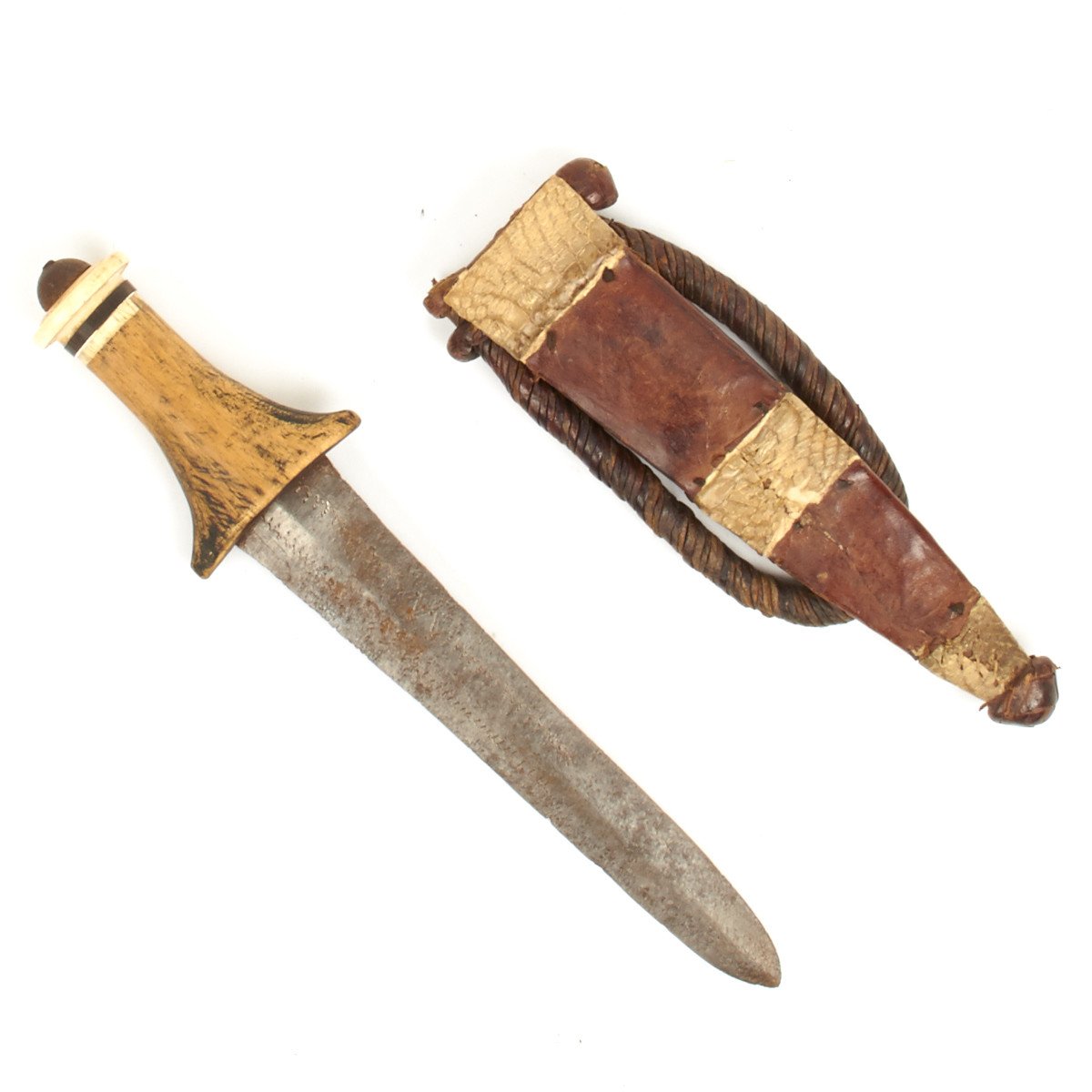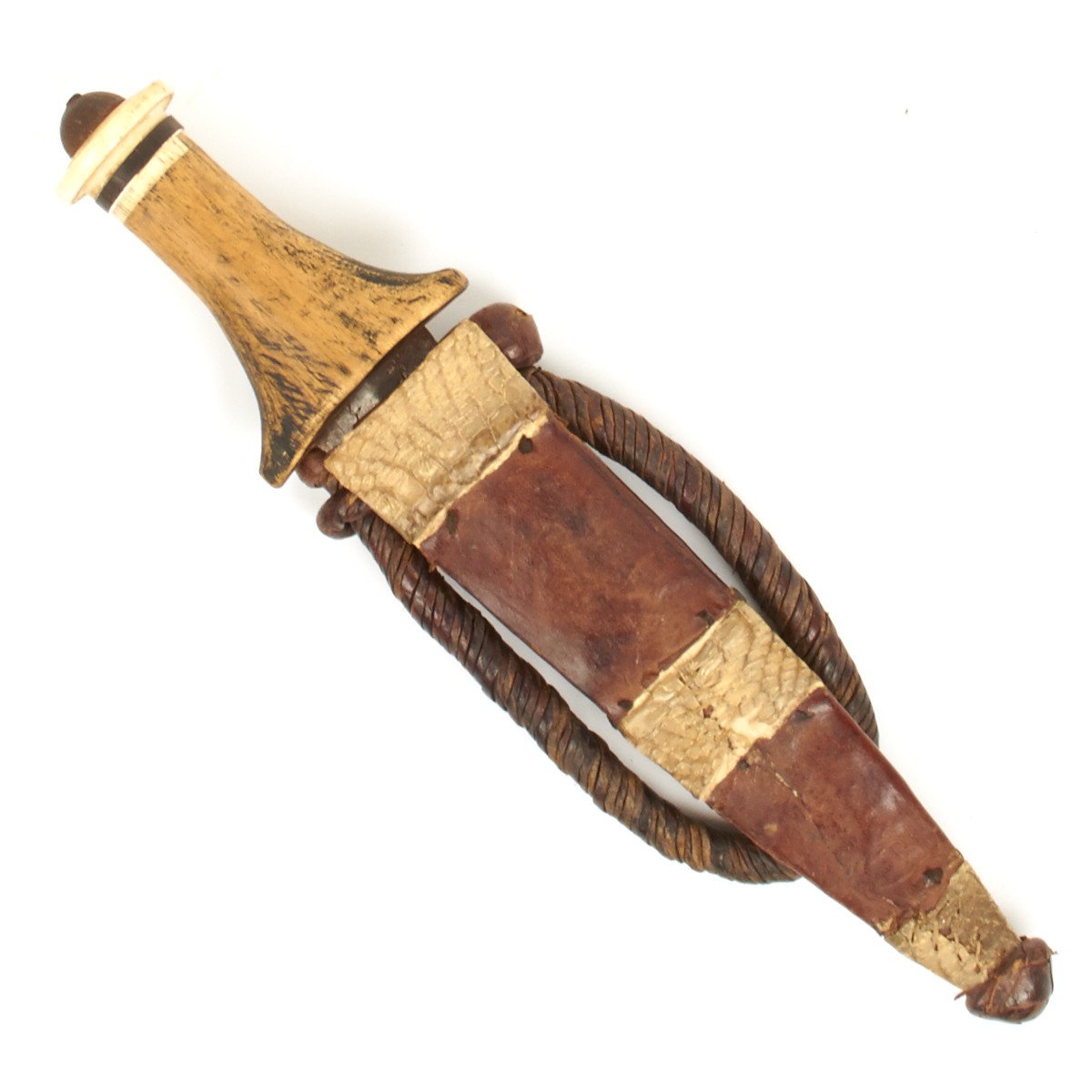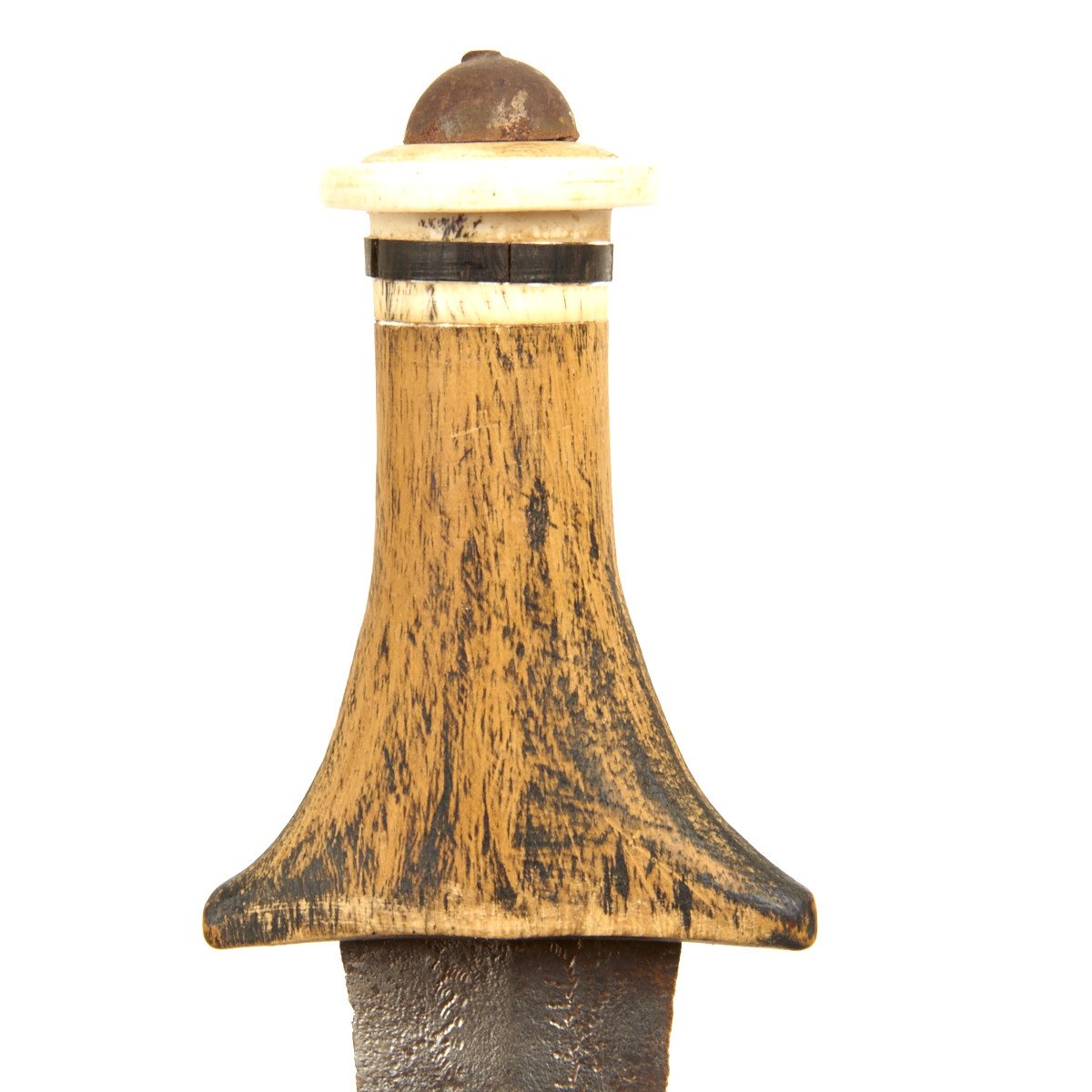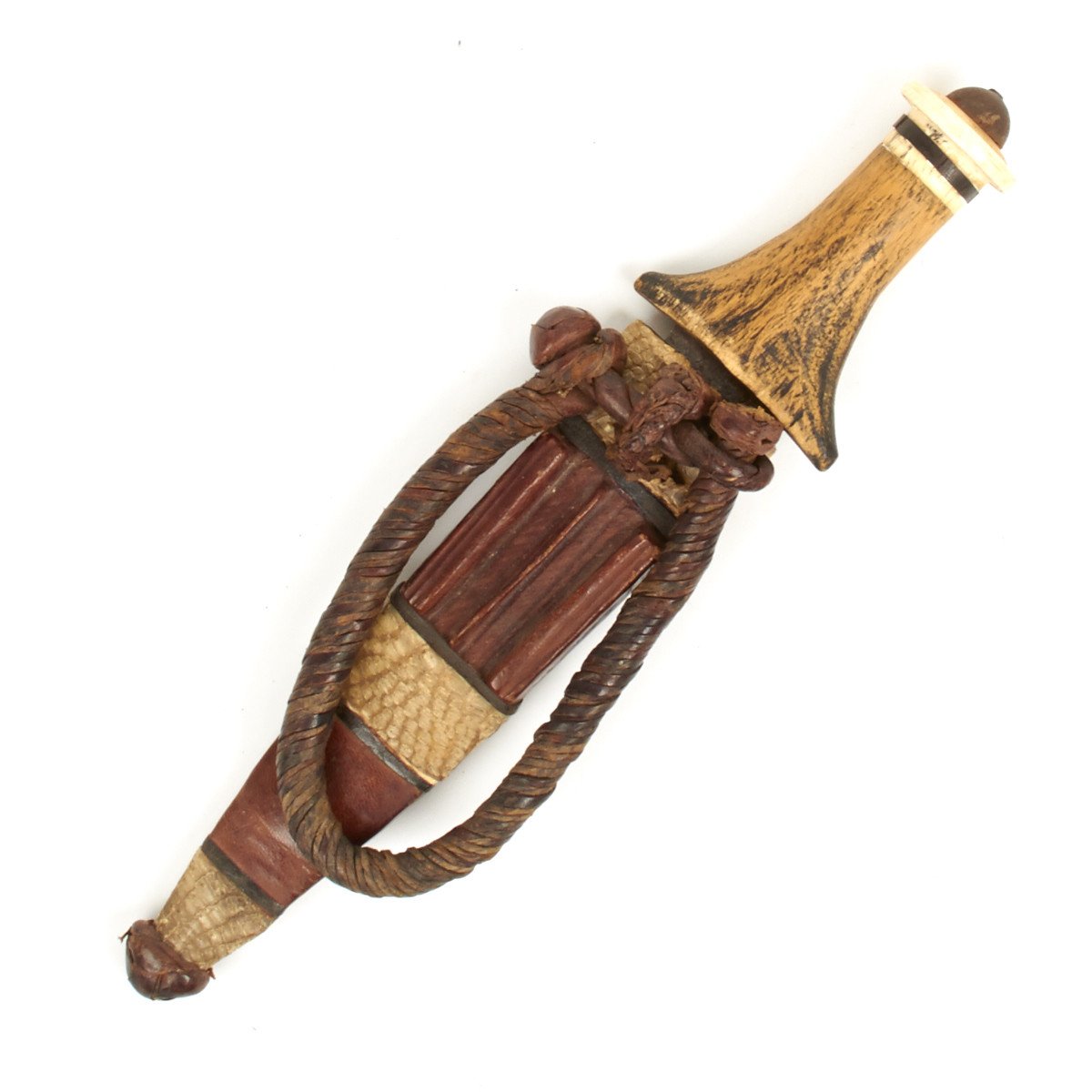Original 1880 Sudanese Mahdi Arm Dagger with Sheath Original Items
$ 250,00 $ 100,00
Original Item: One-of-a-kind. In the 1880s the SUDAN the vast land just south of Egypt was ruled by the Khedive from Cairo. Sudan was basically occupied by native Africans in the south and Arab traders in the north. The coming of the Muslim religious leader known as the “Mahdi” unified the population into an uprising against Egypt.
Britain assisted and allowed General Charles Gordon to become the Governor of Sudan on behalf of the Egyptian Khedive. The result was that after a long siege the entire Khartoum garrison including General Charles Gordon were butchered, leading to much embarrassment for the British Government. It took 14 years, until 1898 for General Gordon to be avenged with the complete destruction of the Muslim Army at the Battle of Omdurman.
The Mahdi army, numbering over 100,000, was made up of many tribes of various origins and used primitive broad swords fashioned on those the European Crusaders had carried back in the 13th and 14th centuries. These were known as Kaskaras and were carried along with a large shield. In addition these fighters wore arm daggers intended for use in assassinations or in the heat of hand to hand combat being easily accessible.
This is such an arm dagger displaying a wood grip trimmed with horn on the pommel and a double edged blade of just 7″ which was carried in a sheath lashed by an adjustable leather thong to the inside of the left forearm ready for use. The leather scabbard, somewhat shrunk from age, is mounted with crocodile skin and has a substantial leather thong attaching mount that can be tightened around the arm.
Brought back as a battle souvenir by a British soldier after the Battle of Omdurman this is extremely interesting as well as potentially deadly. Dating from the1880s.
Muhammad Ahmad bin Abd Allah (Arabic: ???? ???? ??? ??? ????; August 12, 1844 June 22, 1885) was a religious leader of the Samaniyya order in Sudan who, on June 29, 1881, proclaimed himself the Mahdi (or Madhi), the messianic redeemer of the Islamic faith. His proclamation came during a period of widespread resentment among the Sudanese population of the oppressive policies of the Turco-Egyptian rulers, and capitalized on the messianic beliefs popular among the various Sudanese religious sects of the time. More broadly, the Mahdiyya, as Muhammad Ahmad’s movement was called, was influenced by earlier Mahdist movements in West Africa, as well as Wahabism and other puritanical forms of Islamic revivalism that developed in reaction to the growing military and economic dominance of the European powers throughout the 19th century.
From his announcement of the Mahdiyya in June 1881 until the fall of Khartoum in January 1885, Muhammad Ahmad led a successful military campaign against the Turco-Egyptian government of the Sudan (known as the Turkiyah). During this period, many of the theological and political doctrines of the Mahdiyya were established and promulgated among the growing ranks of the Mahdi’s supporters, the Ansars. After Muhammad Ahmad’s unexpected death on 22 June 1885, a mere six months after the conquest of Khartoum, his chief deputy, Abdallahi ibn Muhammad took over the administration of the nascent Mahdist state.
Fast Shipping with Professional Packaging
Thanks to our longstanding association with UPS FedEx DHL, and other major international carriers, we are able to provide a range of shipping options. Our warehouse staff is expertly trained and will wrap your products according to our exact and precise specifications. Prior to shipping, your goods will be thoroughly examined and securely secured. We ship to thousands clients each day across multiple countries. This shows how we're dedicated to be the largest retailer on the internet. Warehouses and distribution centres can be located throughout Europe as well as the USA.
Note: Orders with more than one item will be assigned a processing date depending on the item.
Before shipping before shipping, we'll conduct a thorough inspection of the items you have ordered. Today, the majority of orders will be delivered within 48 hours. The delivery time will be between 3-7 days.
Returns
The stock is dynamic and we cannot completely manage it because multiple stakeholders are involved, including our factory and warehouse. So the actual stock may alter at any time. It's possible that you may not receive your order once the order has been made.
Our policy is valid for a period of 30 days. If you don't receive the product within 30 days, we are not able to issue a refund or an exchange.
You can only return an item if it is unused and in the same state as the day you received it. You must have the item in its original packaging.
Related products
Uncategorized
Uncategorized
Uncategorized
Uncategorized
Uncategorized
Uncategorized
Uncategorized
Uncategorized
Uncategorized
Uncategorized
Angolan Rebel 1970s era 60mm Inert Display Mortar from Angolan Civil War Original Items
Uncategorized
Uncategorized
Uncategorized
Uncategorized
Uncategorized
Uncategorized













































































